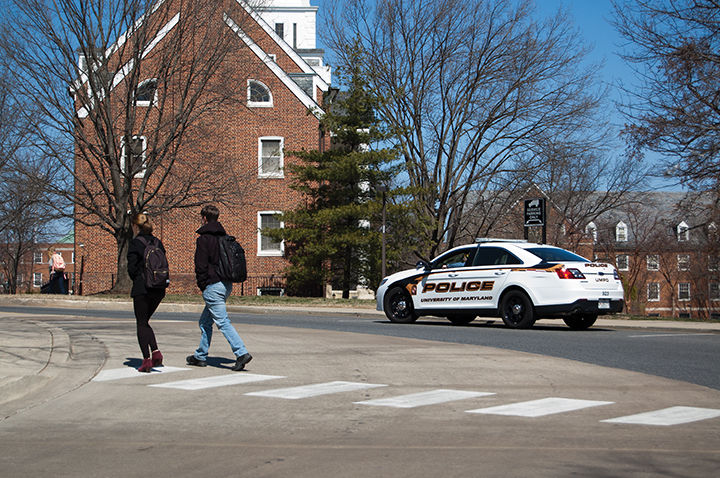
UMPD
Three college police departments in this state — including this university’s — have received surplus military gear through a federal defense program that has fallen under scrutiny in recent weeks.
The U.S. Department of Defense 1033 Program, also known as the excess property program, supplies equipment to state and local law enforcement agencies free of charge.
The initiative has found itself under the national microscope following protests in Ferguson, Missouri, during which the Ferguson Police Department was criticized for using equipment supplied by the 1033 Program in a riot control scenario. It stirred enough controversy that on Aug. 23, President Obama ordered a review of federal programs that distribute military equipment to local police.
But the 1033 Program isn’t anything new, according to Maryland State Police spokesman Maj. Greg Shipley. The state police department has been using it since 1996, he said.
“The program has really benefited us over the years,” Shipley said. “It has provided us with equipment used in aviation, command, lockers and tow motors. We have received a variety that was free of charge from the federal government and the Army.”
The handful of items this university received included 16 12-gauge shotguns, 50 M16 rifles, two transport vehicles and a $65,000 armored truck, University Police spokeswoman Sgt. Rosanne Hoaas confirmed.
Crystal Brown, the chief communications officer for this university, said the department is using the equipment to prepare to respond to the most extreme cases.
The equipment is not routinely used, Hoaas said, and what the department has is on loan, meaning officers maintain the gear and would send it back to the federal government if asked.
“We are a university campus, and as we have seen with events in the past — if you look at Virginia Tech, which is not too far from us — we see incidents on campuses with active shooters, and they’re using an increased amount of firepower, which is not what we want,” Hoaas said.
Hoaas emphasized that members in their police department are highly qualified and trained to use the weapons and ensure the safety of students, faculty, staff, visitors and the community.
“We are trained for active shooter scenarios,” Hoaas said.
This university’s police department also has used the transport vehicles to maneuver in extreme weather conditions, such as heavy snow.
But students such as senior public health major Ava Mahloogi have concerns about this university participating in the program.
“I don’t think that there will be an instance in College Park that would warrant campus police to use military weapons,” Mahloogi said.
Sophomore public health major Katherine Torres-Hernandez echoed this tone.
“I don’t think that our local police should be given those types of weapons,” Torres-Hernandez said. “I think that national security and local security lie on two different levels of severity and should be handled differently and with different weapons.”
Torres-Hernandez said she’ll feel safe on campus regardless, but she worries about abuse of power in the future.
“I think in the long run it can have a negative impact,” she said. “Why do they need military weapons when we aren’t in a war zone?”
The two other state university police departments that have received military gear are Coppin State University and Morgan State University.
CORRECTION: Due to an error in information from University Police, the article previously stated that the department obtained 49 M16 rifles from the 1033 program. It received 50 M16 rifles.
Due to a design error, a previous version of an accompanying graphic misrepresented the number of M16 rifles the university police department owns. The image has been updated to reflect the change.



